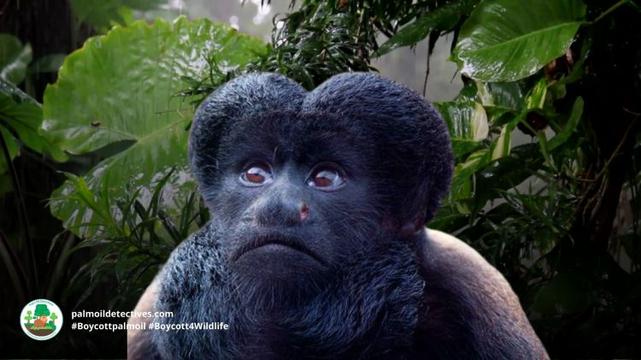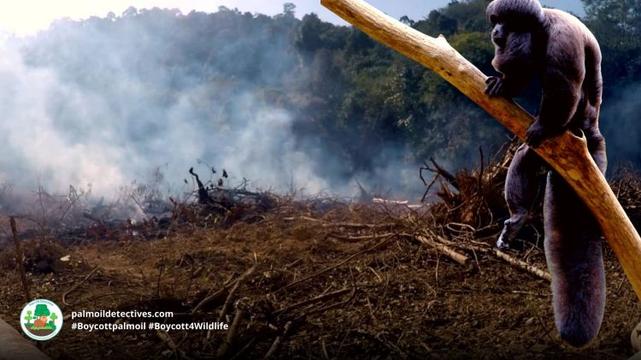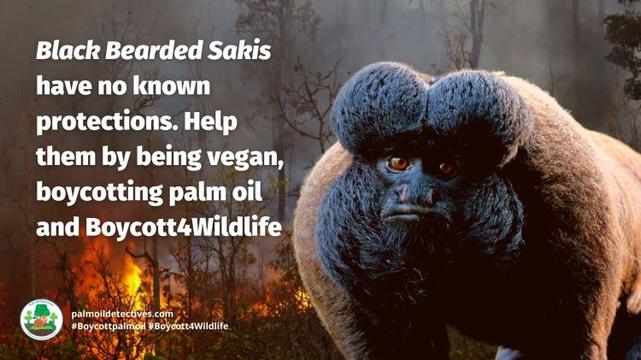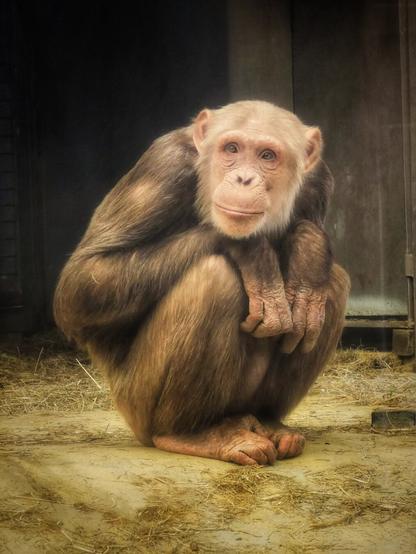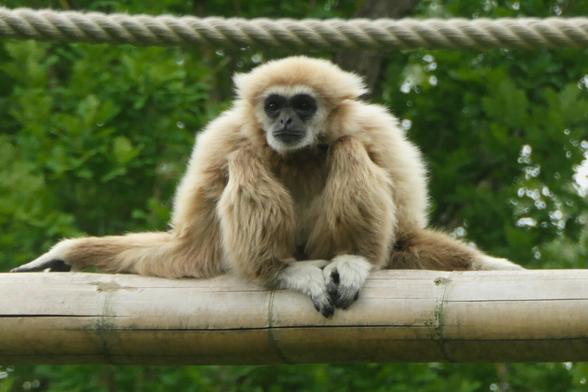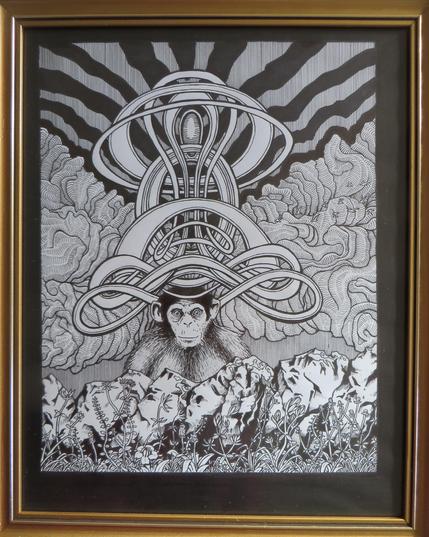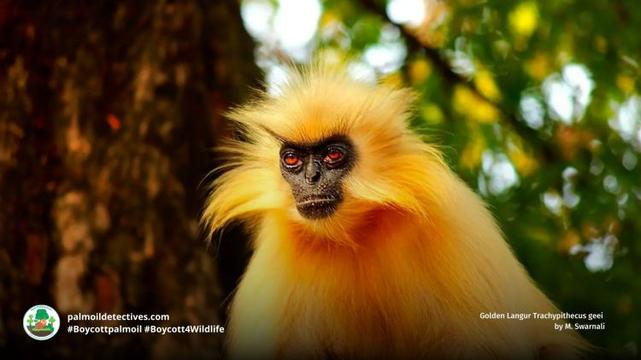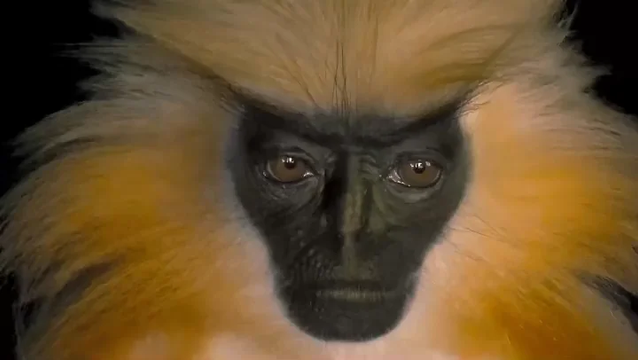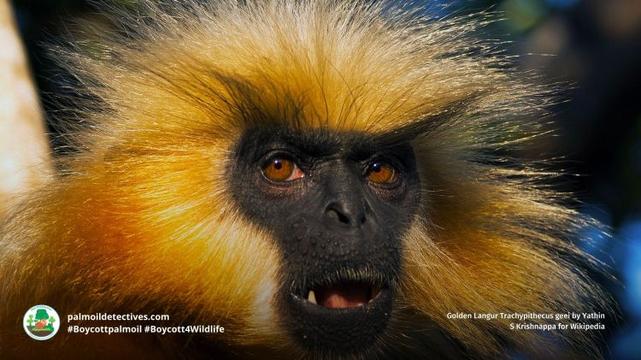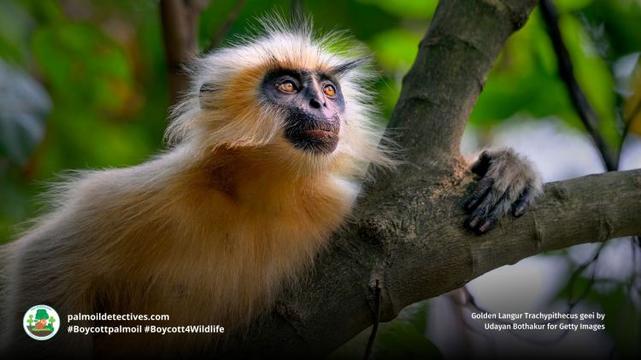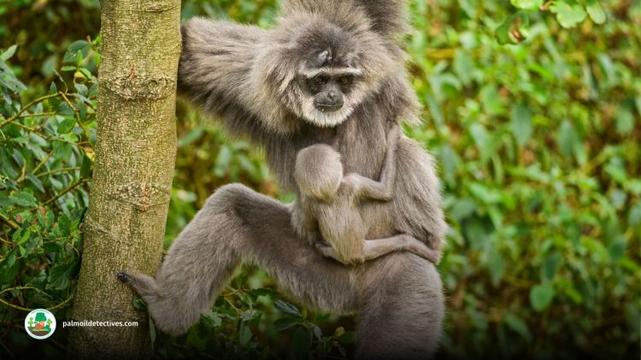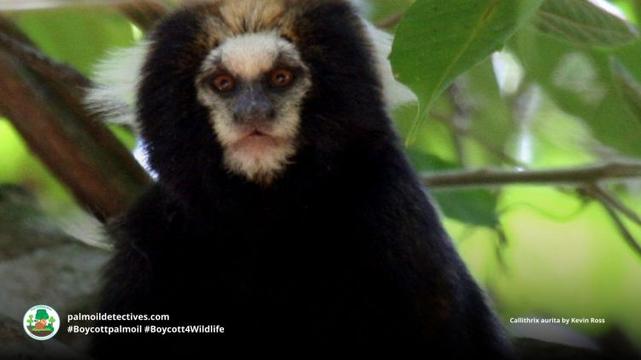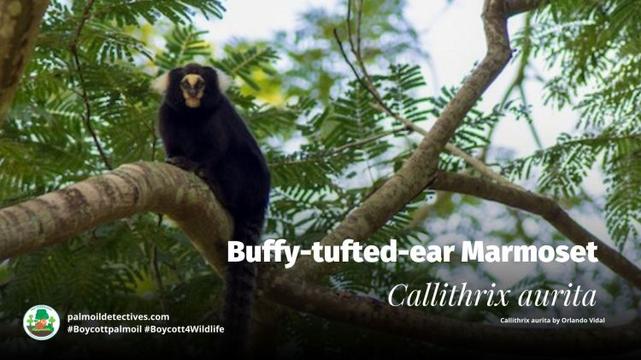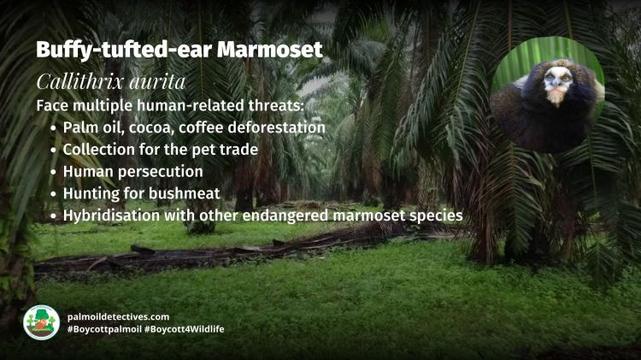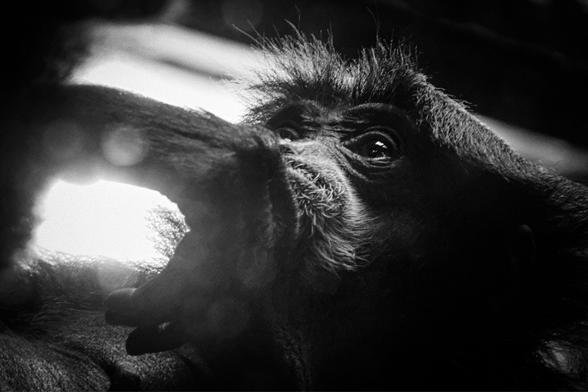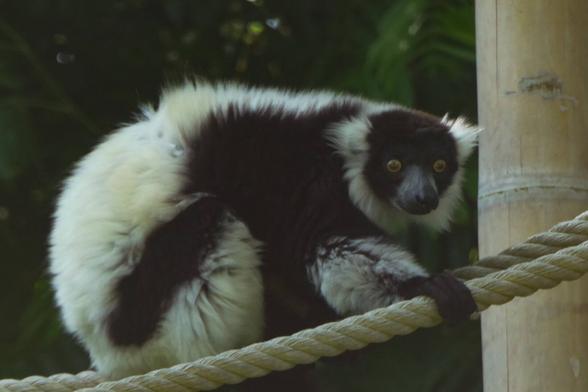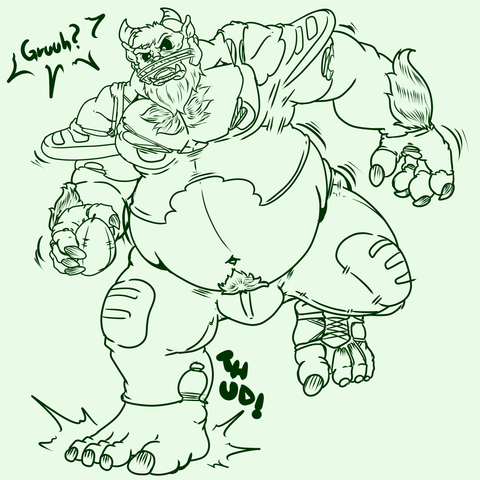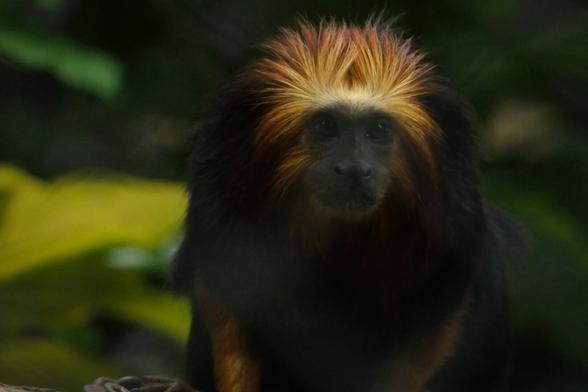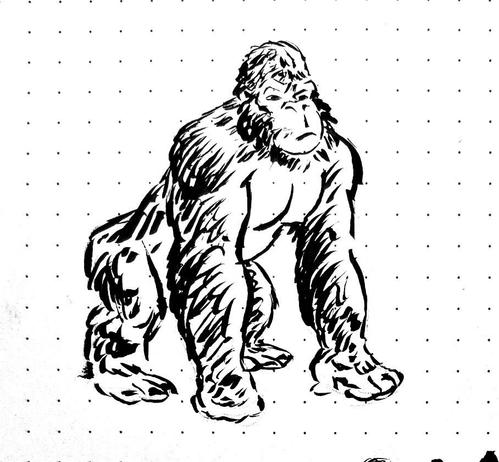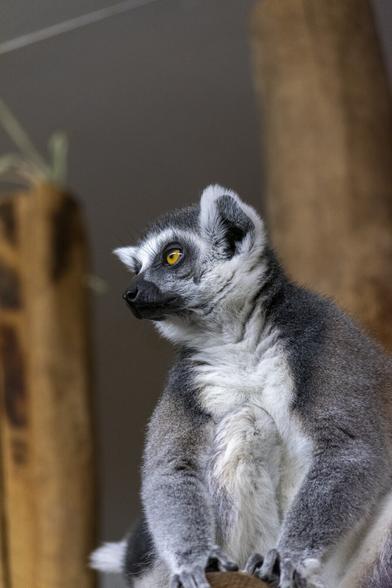Black Bearded Saki Chiropotes satanas
Black Bearded Saki Chiropotes satanas
Red List Status: Endangered
Locations: North-eastern Amazon, Brazil (specifically from the Tocantins River in Pará east to around the Grajaú River in Maranhão)
Beneath the towering canopy of the Amazon’s north-eastern forests, the Black Bearded Saki moves with quiet purpose, their distinctive shaggy beard and robust body a testament to their resilience in a world under siege. The air is thick with the scent of damp earth and the distant calls of unseen creatures, but the forest is changing—#roads, #dams, and #agriculture are carving scars across the landscape, fragmenting the Black Bearded Saki’s ancestral home. The black bearded saki’s survival is threatened by relentless deforestation and hunting, their fate bound to the fate of the forest—fight for their survival every time you shop #BoycottPalmOil #Boycott4Wildlife.
Black Bearded #Sakis are #endangered large #monkeys 🐒 endemic to #Brazil 🇧🇷 #SouthAmerica they are #endangered by #timber #palmoil #hydroelectric dam #deforestation. Help save them and #Boycottpalmoil 🌴🩸🔥🙊⛔️ #Boycott4Wildlife @palmoildetect https://palmoildetectives.com/2021/08/28/black-bearded-saki-chiropotes-satanas/
Share to BlueSky Share to TwitterAppearance and Behaviour
Black bearded sakis are medium-sized primates, their bodies draped in thick, dark fur and their faces framed by a distinctive, flowing beard. Adults typically measure around 50 centimetres in length, with a tail nearly as long as their body, and weigh between 2.5 and 3.5 kilograms. Their robust build and strong limbs allow them to move with surprising agility through the upper canopy, where they spend most of their lives. The black bearded saki’s most remarkable feature is their powerful jaw and specialised teeth, which enable them to crack open the hard shells of unripe fruits to reach the nutritious seeds inside. This adaptation makes them one of the most efficient seed predators and seed dispersers in the Amazon, and their foraging habits play a vital role in shaping the forest ecosystem.
Black bearded sakis live in groups of up to 40 individuals, though smaller groups are more common. They are highly social, with strong bonds between group members, and communicate through a variety of vocalisations, including chirps, whistles, and alarm calls. Their days are spent foraging, resting, and moving through the canopy, rarely descending to the forest floor. The black bearded saki’s presence is often marked by the sound of falling fruit and the rustle of leaves as they leap from branch to branch.
Black Bearded Saki Chiropotes satanasBlack Bearded Saki Chiropotes satanasBlack Bearded Saki Chiropotes satanasThreats
The greatest risks for the future survival of the Black Bearded Saki, also known as the Black Cuxiú are the loss and fragmentation of their habitat and hunting pressure.
IUCN Red list
Palm oil, meat, and soy deforestation
The black bearded saki is classified as Endangered on the Red List, with the loss and fragmentation of their forest habitat the primary threat to their survival. In the north-eastern Amazon, large-scale infrastructure projects—such as highways and the Tucurúi Dam—have destroyed vast tracts of forest, while smaller-scale logging and agriculture continue to fragment the remaining habitat. The forest, once a living, breathing entity, is being replaced by roads, fields, and settlements, leaving only isolated patches where the black bearded saki can survive. This fragmentation isolates populations, reduces genetic diversity, and increases the risk of disease and local extinction. The black bearded saki’s ability to adapt to habitat loss is limited, and their long-term survival depends on the protection and restoration of connected forest landscapes.
Hunting and poaching
Hunting for bushmeat is a persistent threat to the black bearded saki, with individuals targeted for their meat and, in some cases, their tails, which are used as dusters. The influx of people into previously uninhabited areas of the Amazon has increased hunting pressure, and the loss of habitat makes sakis more vulnerable to capture. Hunting disrupts social groups, reduces population numbers, and threatens the genetic health of remaining populations. The black bearded saki is already locally extinct in much of its original range, and continued hunting could push them closer to extinction.
Habitat fragmentation and climate change
The fragmentation of the Amazon’s forests has profound effects on the black bearded saki. Small, isolated forest patches limit the availability of food and mates, and groups living in these fragments often show reduced movement and vocalisation, as well as increased resting. Population densities in small fragments can increase, leading to higher rates of disease and parasite transmission. Climate change adds further pressure, altering rainfall patterns and the availability of key food sources. The black bearded saki’s world is becoming hotter, drier, and less predictable, with the forests they depend on shrinking year by year.
Diet
Black bearded sakis are among the most specialised seed dispersers in the Amazon, with seeds making up the majority of their diet. They spend at least 75% of their feeding time consuming seeds from more than 50 different fruit species, using their powerful jaws and specialised teeth to crack open hard-shelled fruits that few other animals can access. Their diet also includes ripe fruit, flowers, leaf stalks, and arthropods such as caterpillars, termites, and gall wasps. The black bearded saki’s foraging habits are closely tied to the seasonal availability of fruit, with peak feeding activity during the rainy season when many trees are fruiting. Their role as seed predators helps shape the composition of the forest, and their ability to exploit hard-shelled fruits gives them a unique niche in the ecosystem.
Reproduction and Mating
Little is known about the reproductive habits of black bearded sakis in the wild, but observations in captivity and from related species suggest that births occur at the beginning of the rainy season, typically in December or January. Gestation is estimated to last four to five months, and females give birth to a single infant. The mother is the primary caregiver, nursing and carrying her young until the infant is weaned at around three months of age. After weaning, infants remain close to their mothers for protection, and strong social bonds within the group help ensure the survival of young sakis. The reproductive success of black bearded sakis is closely tied to the availability of food and the stability of their forest home.
Geographic Range
The black bearded saki is endemic to the far eastern Amazon in Brazil, with a range restricted to a relatively small region from the Tocantins River in Pará east to around the Grajaú River in Maranhão. They inhabit primary terra firme forests and, occasionally, regenerating forests, rarely descending to the forest floor. The natural home range of a black bearded saki group can vary from 200 to 250 hectares, but habitat loss and fragmentation have reduced the size and connectivity of these ranges. The black bearded saki is already locally extinct in much of its original range, and the remaining populations are increasingly isolated and vulnerable.
FAQs
How many black bearded sakis are left?
Estimates suggest that fewer than 2,500 mature black bearded sakis remain in the wild, with populations continuing to decline due to habitat loss, fragmentation, and hunting. The species is already locally extinct in much of its original range, and the remaining individuals are scattered across increasingly isolated forest fragments.
What are the characteristics of the black bearded saki?
The black bearded saki is a medium-sized primate with thick, dark fur and a distinctive, flowing beard. Adults typically measure around 50 centimetres in length, with a tail nearly as long as their body, and weigh between 2.5 and 3.5 kilograms. They are highly specialised seed predators, with powerful jaws and unique dentition that allow them to crack open hard-shelled fruits. Black bearded sakis live in social groups, communicate through a variety of vocalisations, and spend most of their lives in the upper canopy.
What do black bearded saki eat?
Black bearded sakis are highly specialised seed predators, with seeds making up the vast majority of their diet. They spend at least 75% of their feeding time consuming seeds from more than 50 different fruit species, using their robust jaws and specialised teeth to crack open hard-shelled fruits that many other animals cannot access. Their diet also includes fleshy fruits and, to a lesser extent, insects. They are particularly fond of plants from the Sapotaceae, Lecythidaceae, and Chrysobalanaceae families. This dietary flexibility allows black bearded sakis to adapt to changing forest conditions, but their reliance on certain tree species makes them vulnerable to habitat loss and selective logging.
Is the black bearded saki a monkey?
Yes, the black bearded saki is a monkey—specifically, a New World monkey native to the Amazon rainforest. Unlike apes, monkeys have tails, and the black bearded saki’s long, muscular tail helps them balance as they move through the trees. They are part of the bearded saki group, known for their robust build, thick fur, and specialised feeding habits.
What are the main threats to the survival of the black bearded saki?
The main threats to the survival of the black bearded saki are habitat loss and fragmentation caused by infrastructure projects, logging, and agriculture, as well as hunting for bushmeat. The loss of forest isolates populations, reduces genetic diversity, and increases the risk of disease and local extinction. Hunting further reduces population numbers and disrupts social groups.
How does habitat fragmentation affect the black bearded saki?
Habitat fragmentation isolates black bearded saki groups, reducing the availability of food and mates and increasing the risk of disease. Groups living in small, isolated forest patches often show reduced movement and vocalisation, as well as increased resting. Population densities in small fragments can increase, leading to higher rates of disease and parasite transmission. The black bearded saki’s ability to adapt to habitat loss is limited, and their long-term survival depends on the protection and restoration of connected forest landscapes.
Do black bearded sakis make good pets?
Black bearded sakis do not make good pets. Captivity causes extreme stress, loneliness, and early death for these highly social, intelligent primates. The pet trade and hunting for bushmeat rip families apart and fuel extinction, as infants are stolen from their mothers and forced into unnatural, impoverished conditions. Protecting black bearded sakis means rejecting the illegal pet trade and supporting their right to live wild and free in their forest home.
Where do bearded sakis live?
Bearded sakis, including the black bearded saki, are endemic to the Amazon rainforest in South America. The black bearded saki specifically inhabits a small region in north-eastern Brazil, from the Tocantins River in Pará east to the Grajaú River in Maranhão. They prefer primary tropical rainforests with dense, continuous canopies, which provide safety from predators and abundant food sources. Their natural home ranges can vary from 200 to 250 hectares, but habitat fragmentation has dramatically reduced the size and connectivity of these ranges. Today, black bearded sakis are found only in scattered forest fragments, making their survival increasingly precarious.
What is the lifespan of a black bearded saki?
The lifespan of the black bearded saki is estimated to be up to 18 years in the wild, with sexual maturity typically reached at around 4 years of age. Females usually give birth every two years, and the long interval between births suggests a relatively slow reproductive rate. Closely related bearded saki species have been known to live up to 20 years in the wild, though specific data for the black bearded saki remains limited. Their longevity is closely tied to the quality and continuity of their forest habitat, with threats such as habitat destruction and hunting potentially reducing average lifespans in fragmented environments
Take Action!
Use your wallet as a weapon and #BoycottPalmOil #Boycott4Wildlife. Support indigenous-led conservation and agroecology. Reject products linked to deforestation, mining, and the illegal wildlife trade. Adopt a #vegan lifestyle and #BoycottMeat to protect wild and farmed animals alike. Every choice matters—stand with the black bearded saki and defend the forests of the Amazon.
Black Bearded Saki Chiropotes satanasBlack Bearded Saki Chiropotes satanasYou can support this beautiful animal
There are no known conservation activities for this animal. Share out this post to social media and join the #BoycottPalmOil #Boycott4Wildlife on social media to raise awareness
Further Information
Boubli, J. P., de Lima, E. M., Silva, M. N. F., & Silva Júnior, J. S. (2009). Bearded sakis in south-eastern Amazonia—back from the brink? Oryx, 43(2), 283–288. https://www.cambridge.org/core/journals/oryx/article/bearded-sakis-in-southeastern-amazoniaback-from-the-brink/703BC0853B02C2FB8017AD73EDA6BAB8
Neprimateconservancy.org. (n.d.). Black Bearded Saki, Chiropotes satanas. https://neprimateconservancy.org/black-bearded-saki/
Port-Carvalho, M., Muniz, C.C., Fialho, M.S., Alonso, A.C., Jerusalinsky, L. & Veiga, L.M. 2021. Chiropotes satanas (amended version of 2020 assessment). The IUCN Red List of Threatened Species 2021: e.T39956A191704509. https://dx.doi.org/10.2305/IUCN.UK.2021-1.RLTS.T39956A191704509.en. Downloaded on 05 June 2021.
van Roosmalen, M. G. M., Mittermeier, R. A., & Fleagle, J. G. (1988). Diet of the northern bearded saki (Chiropotes satanas chiropotes): A neotropical seed predator. American Journal of Primatology, 14(1), 11–35. https://doi.org/10.1002/ajp.1350140103
Veiga, L. M., & Ferrari, S. F. (2007). Conservation status of the black-bearded saki Chiropotes satanas in Maranhão, Brazil. International Journal of Primatology, 28(2), 347–358. https://doi.org/10.1007/s10764-007-9146-6
Wikipedia. (n.d.). Black bearded saki. https://en.wikipedia.org/wiki/Black_bearded_saki
Black Bearded Saki Chiropotes satanas
How can I help the #Boycott4Wildlife?
Take Action in Five Ways
1. Join the #Boycott4Wildlife on social media and subscribe to stay in the loop: Share posts from this website to your own network on Twitter, Mastadon, Instagram, Facebook and Youtube using the hashtags #Boycottpalmoil #Boycott4Wildlife.
2. Contribute stories: Academics, conservationists, scientists, indigenous rights advocates and animal rights advocates working to expose the corruption of the palm oil industry or to save animals can contribute stories to the website.
Mel Lumby: Dedicated Devotee to Borneo’s Living Beings
Anthropologist and Author Dr Sophie Chao
Health Physician Dr Evan Allen
The World’s Most Loved Cup: A Social, Ethical & Environmental History of Coffee by Aviary Doert
How do we stop the world’s ecosystems from going into a death spiral? A #SteadyState Economy
3. Supermarket sleuthing: Next time you’re in the supermarket, take photos of products containing palm oil. Share these to social media along with the hashtags to call out the greenwashing and ecocide of the brands who use palm oil. You can also take photos of palm oil free products and congratulate brands when they go palm oil free.
https://twitter.com/CuriousApe4/status/1526136783557529600?s=20
https://twitter.com/PhillDixon1/status/1749010345555788144?s=20
https://twitter.com/mugabe139/status/1678027567977078784?s=20
4. Take to the streets: Get in touch with Palm Oil Detectives to find out more.
5. Donate: Make a one-off or monthly donation to Palm Oil Detectives as a way of saying thank you and to help pay for ongoing running costs of the website and social media campaigns. Donate here
Pledge your support#Agriculture #BlackBeardedSakiChiropotesSatanas #Boycott4wildlife #BoycottMeat #BoycottPalmOil #Brazil #bushmeat #dams #deforestation #endangered #EndangeredSpecies #ForgottenAnimals #hunting #hydroelectric #illegalPetTrade #infrastructure #Mammal #monkey #monkeys #palmoil #Primate #primates #roads #Sakis #SeedDispersers #seeddispersal #SouthAmericaSpeciesEndangeredByPalmOilDeforestation #SouthAmerica #timber #vegan

